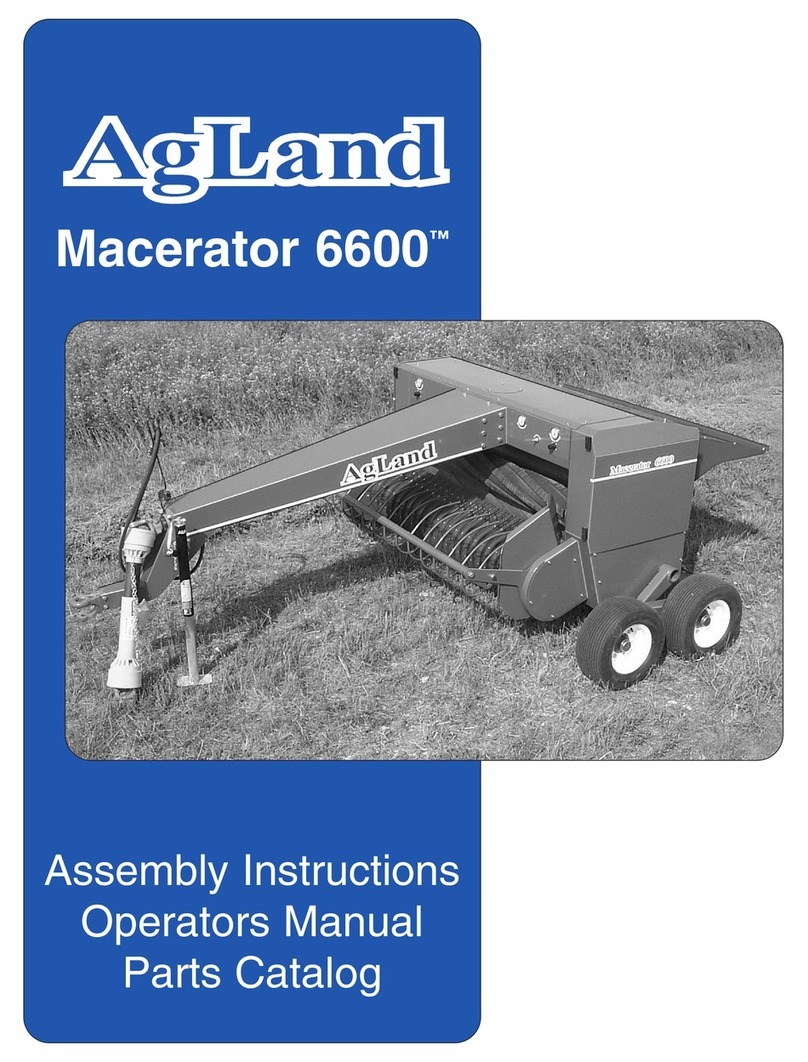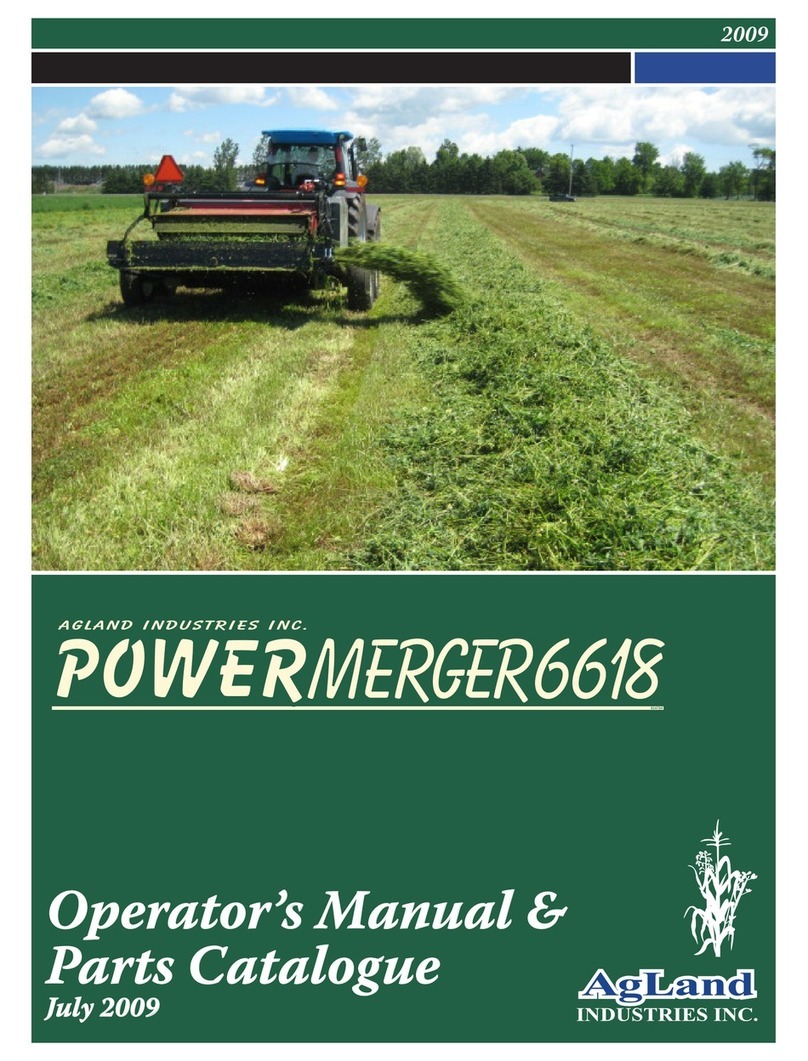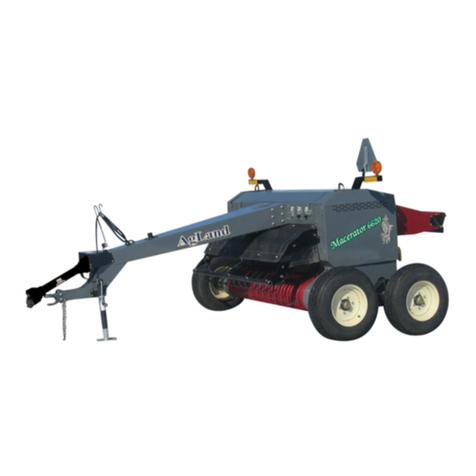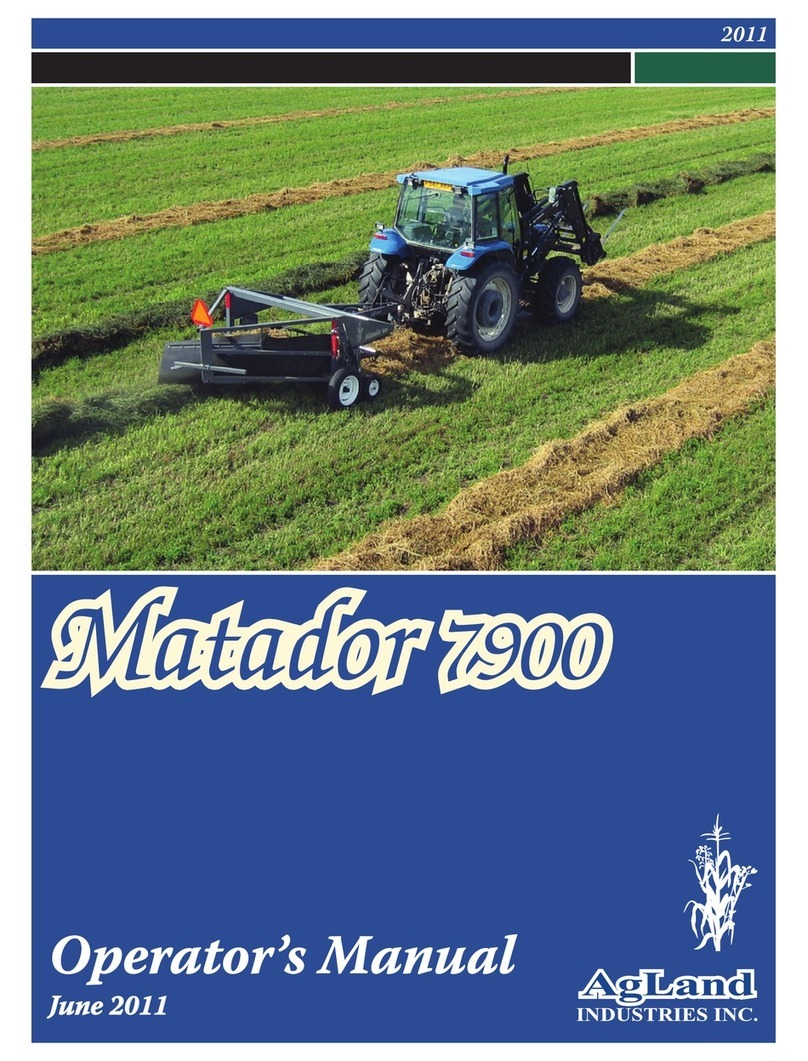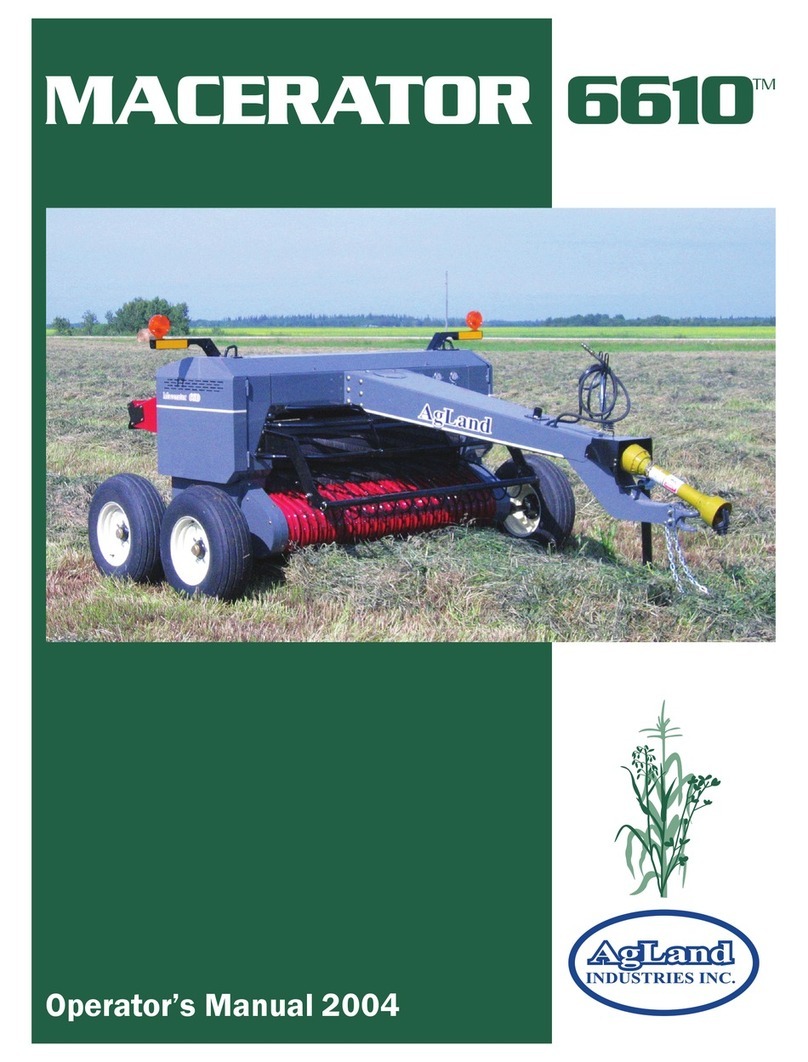BEARING REPLACEMENT
Sealed ball bearings are held in position on the shaft
by a locking collar, figure 1, which is rotated to lock
the assembly on the shaft and secured by a set
screw. To remove Bearing:
1. Loosen set screw
2. Use a drift punch inserted in the drift pin hole to
rotate and loosen the locking collar (1). Rotate the
locking collar counter clock wise.
3. Remove the locking collar.
4. Support the shaft, for easier assembly later.
5. Remove the bolts for the bearing flanges.
6. Slide the bearing and the flanges from the shaft.
Note: Cleaning paint and corrosion from the shaft will
make removal easier.
7. Put on the new bearings and flanges.
8. Replace locking collar on the shaft. Rotate the lock-
ing collar clockwise until lightly engaged. Tighten the
collar by hitting it with a drift pin punch inserted in the
drift pin hole rotating it further clockwise.
9. Tighten set screw.
REPLACING OR REPACKING WHEEL BEARINGS
1. Remove wheel hubs and disassemble.
2. Clean bearings, seals, caps, washers, nuts and
hubs with kerosene or other solvent.
3. Replace bearings or seals if worn or damaged.
4. Pack bearing cones and seals with No. 2 multi-pur-
pose lithium grease or equivalent.
5. Reassemble hub and bearings. ( figure 2 )
a. Press cups against the shoulder in the hub.
b. Press seal flush into hub after bearing.
c. Place hub on shaft taking care not to damage
the seal!
d. Tighten the wheel bearing nut. Do not
overtighten.
e. Secure nut with a cotter pin.
f. Be sure to replace hub cap.
PICKUP TEETH, WRAPPERS, WEAR STRIPS
Check for bent, broken or loose parts. If it is necessary
to replace teeth or related parts, proceed as follows.
1. Ensure that your Macerator is blocked securely.
Loosen the bolts, holding the wrapper(s) on pickup. (fig.
3) Slide wrapper forward, and remove the wrapper from
the bolts.
“Pop”Rivets
Plastic Wear Strips
Wrapper
Teeth
2. Should the plastic wear strip require removal and
replacement, drill out or carefully grind off the “pop”
rivets. Replace strip with new rivets (figure 4).
3. Install new teeth or wrapper(s).
MAINTENANCE
Figure 4
Figure 3
16
two rivets
two bolts
1
locking collar
bearing
Figure 2
Figure 1






